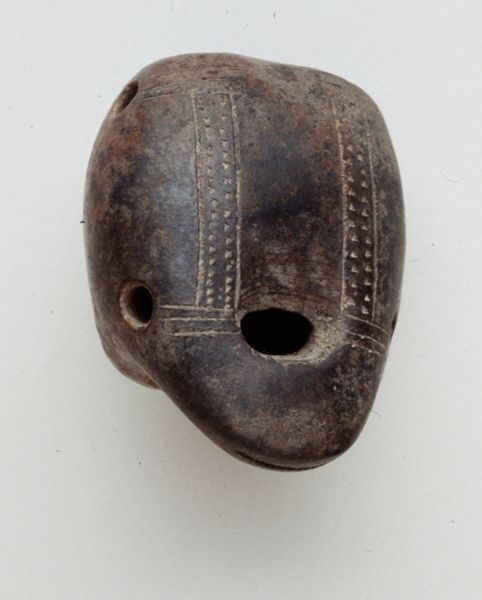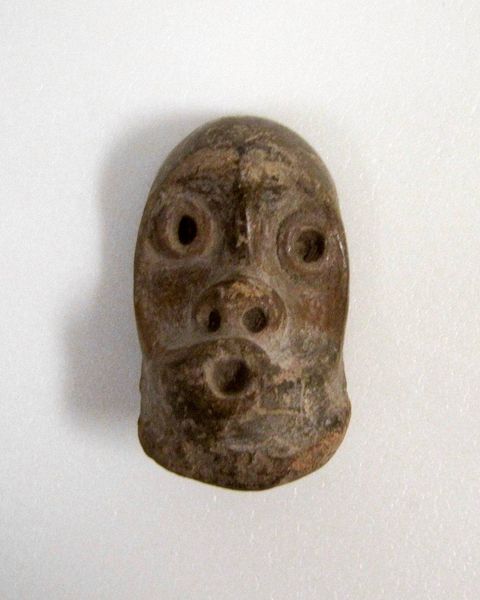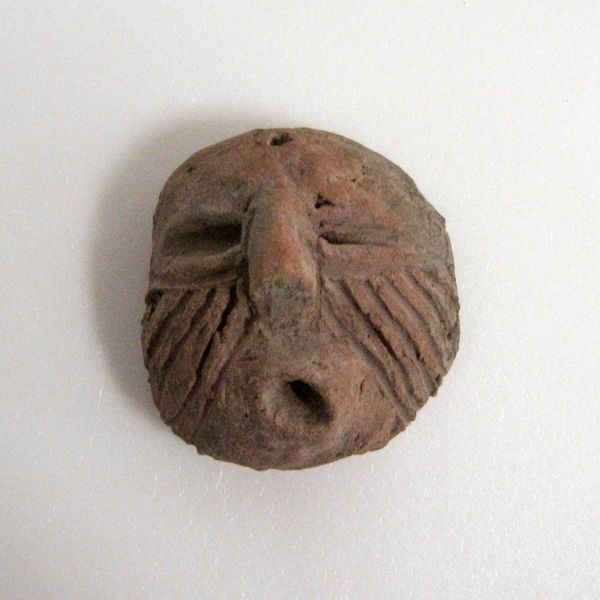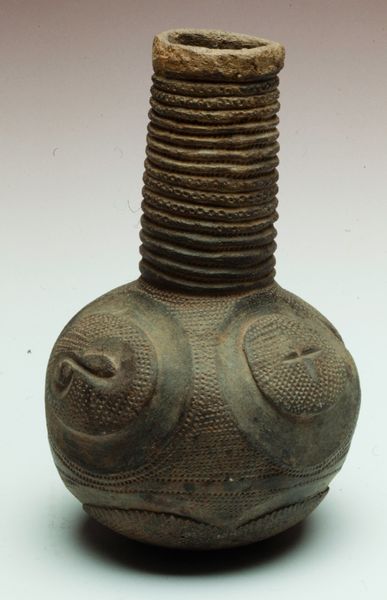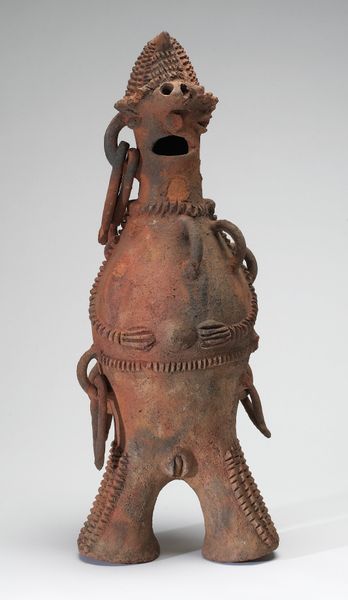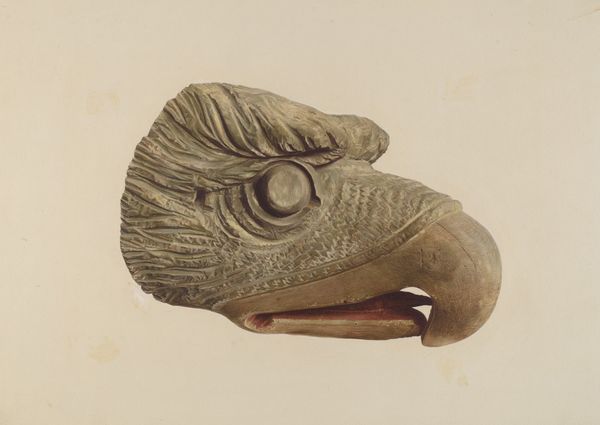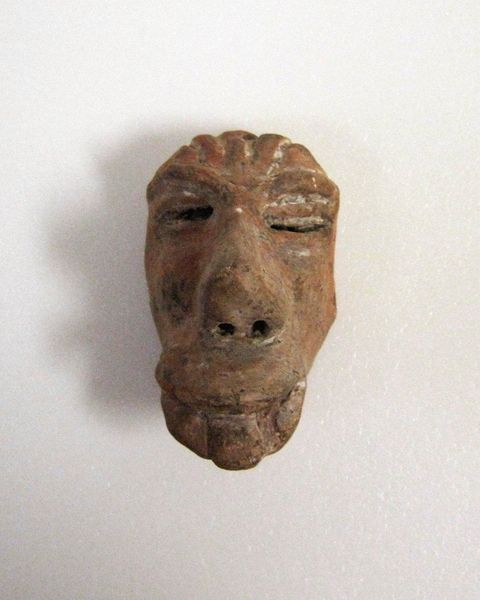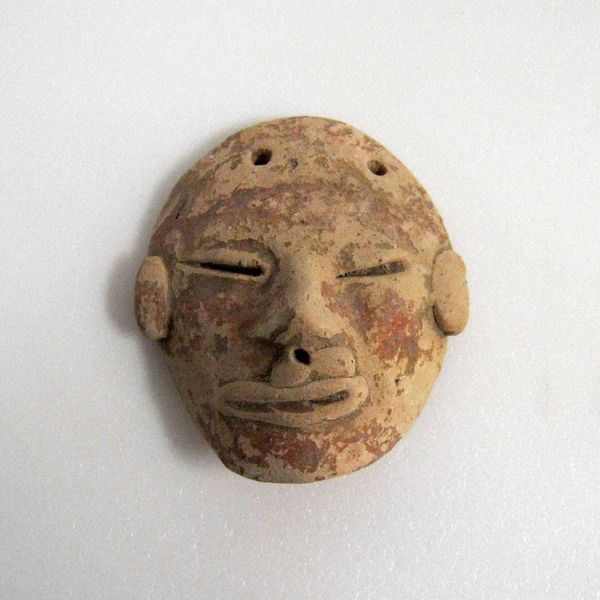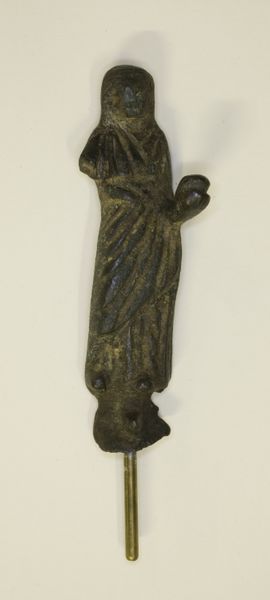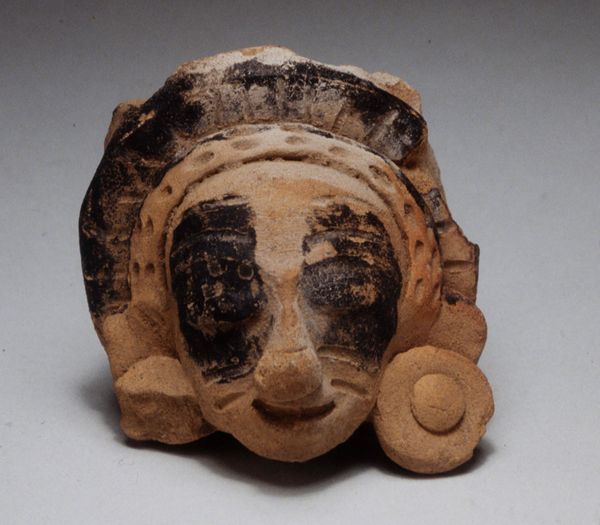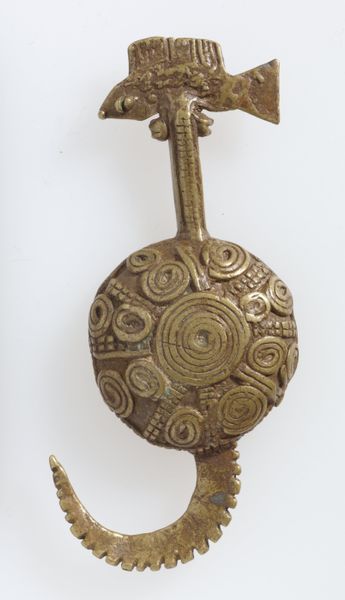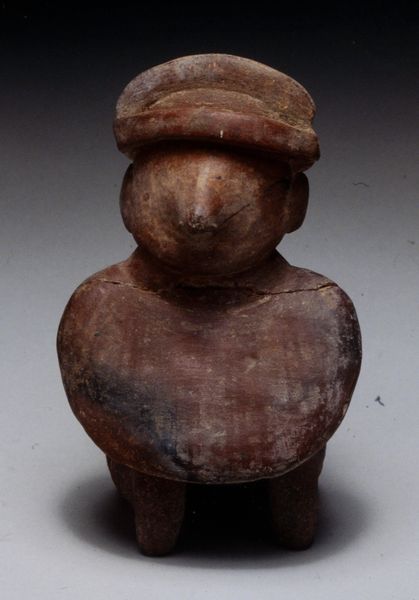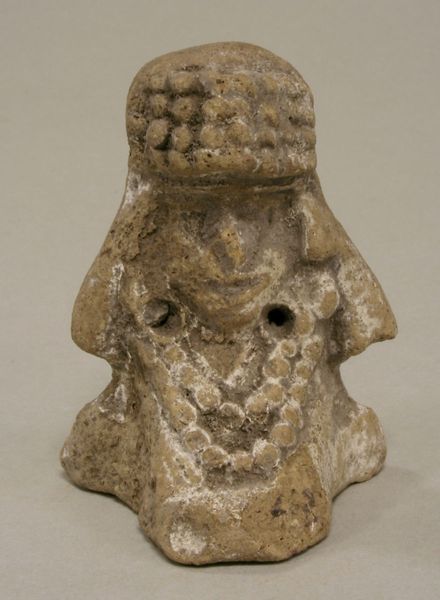
Dimensions: object: 230 x 205 x 70 mm, 2.4 kg
Copyright: © William Turnbull. All Rights Reserved, DACS 2014 | CC-BY-NC-ND 4.0 DEED, Photo: Tate
Curator: William Turnbull’s bronze sculpture, "Mask I", at the Tate, strikes me immediately as ancient, almost totemic. Editor: I agree, there’s an archaic quality. But I see more than just antiquity. There’s a raw, brutalist feel to the sculpted texture, and the symmetrical arrangement lends itself to thinking about the politics of power, surveillance, even conformity. Curator: Interesting. I see the symmetry more as a reflection of ritualistic masks across cultures, suggesting a shared humanity hidden beneath constructed identities. How does the mask function in power structures and liberation? Editor: It’s that tension, isn’t it? The mask both conceals and reveals. The texture speaks of the body, and the mask’s imposed structure speaks to the forces enacting control over it. Curator: An important consideration. It reminds us that identity is never simply individual but always exists in relation to systems of power. Editor: Exactly. Turnbull's "Mask I" becomes a potent symbol for the complexities of being and becoming.
Comments
Join the conversation
Join millions of artists and users on Artera today and experience the ultimate creative platform.
tate 6 months ago
⋮
In the 1950s Turnbull developed an art that almost mimicked an imagined ancient civilization. The human head became a recurring subject. This is one of the first of a series of masks, a common theme in several non-western traditions. Such works were produced by pushing various objects into a clay original from which a cast was then taken. Gallery label, September 2016
